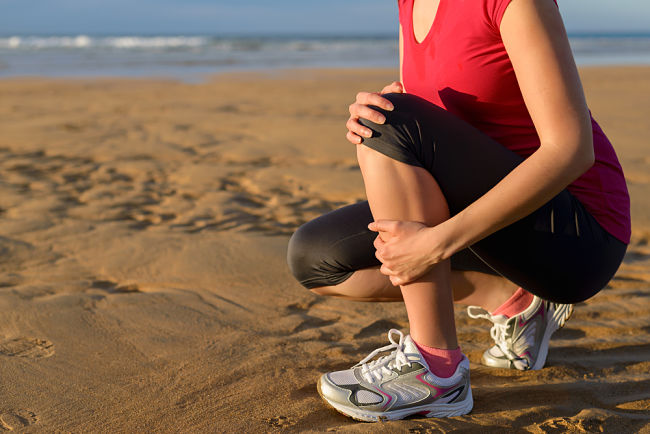Menopause and arthritis, their connection and solutions

When that morning “snap or crack” is no longer coming from your cereal, you may need to pay attention to the sound your joints make. Finger pain, tight hips, knee pain – joint pain is one of the most common symptoms of menopause. The menopause and arthritis connection are a given and if you feel a bit stiff and sore, especially in the morning, there are things you can do to control the inflammation and pain.

Table of Contents
What is the connection between joint pain and menopause?
Although the precise cause and effect of menopause and joint pain has not yet been established, it is quite clear that there is one.
Unless there is no autoimmune disease such as rheumatoid arthritis, lupus, or others that cause joint pain, pain, swelling, and inflammation in the joints are a sign of osteoarthritis (OA), and as OA disproportionately affects the women in menopause, changes in the hormonal level are likely at least part of the cause.
One thought is that because estrogen is a natural anti-inflammatory, when it sinks in and subsides, inflammation can take hold more easily. Additionally, estrogen regulates fluid levels throughout your body, so just as your skin is drier and less elastic, so can your joint tissue.
What are the risk factors for OA and joint pain?
Being a woman in menopause is a risk factor, and unfortunately for most of us, there is nothing we can do about it. But there are other taxpayers that may be under your control.
The aches and pains of menopause and perimenopause are relatively common, but there are several factors that can unnecessarily exacerbate them.
Being overweight, leading a sedentary lifestyle, dehydration, a poor diet, smoking, and stress can trigger or worsen joint pain. Less controllable factors include heredity and a history of injury.
Six Ways to Control, Decrease, or Avoid Joint Pain.
First, change the things you can.
Eat anti-inflammatory foods.
Include foods that are naturally anti-inflammatory, like blueberries. Healthline suggests adding turmeric, ginger, cinnamon, garlic, and other herbs and spices that naturally help reduce inflammation.
Chocolate, nuts, fatty fish, and other Omega-3-rich foods, and those green leafy vegetables can help too.
According to ChronicBodyPain.net , citrus fruits, caffeine, nightshades (such as tomatoes), sugar (in all their forms), and salt can trigger joint pain, therefore limit your intake of these.
Exercise.
When your joints hurt, you put exercise at the end of your list of things that can’t wait, but don’t discount it. Regular movement helps keep your joints lubricated and strengthens the muscles that surround and support your joints.
Low-impact activities like yoga, swimming, and cycling are gentler on the joints than high-impact sports like running. Regular exercise can also help you with another risk factor for joint pain.
Manage your weight.
Excess kilos mean excess hitting your joints as you move, so losing even a few pounds can increase mobility and ease pain.
Hydrate yourself.
Drink plenty of water to keep tissues moist and flexible. At menopause, our bodies lose water (or don’t retain it as well), so it is important to replace lost moisture as much as possible. And that means water. No sports drinks, no sodas, no coffee.
Ice.
When there is inflammation, ice can help relieve pain. Apply carefully to avoid damaging your skin: 20 minutes with an ice pack should help reduce swelling.
Less stress.
We know that is easier said than done, but when it comes to joint pain, stress is especially troublesome. Stress increases cortisol levels, and cortisol can cause additional inflammation in the joints. Do what you can to keep stress under control.
Supplements.
There are a variety of supplements that can help. One of the best supplements for menopausal joint pain may be magnesium glycinate. “Magnesium makes bones strong; maintains nerve and muscle function; regulates heart rate and blood sugar levels; and helps maintain articular cartilage”. Other good options are glucosamine and chondroitin.
Results vary personally and please always consult a medical professional and do your due diligence before beginning a supplemental routine.
When to talk to a doctor?
There are other causes of joint pain that can be more serious than a drop in estrogen, so if you’re concerned that your pain may have another cause, see a medical professional.
Other possible causes of joint pain include lupus, Lyme disease, gout, septic arthritis, gonococcal arthritis, and rheumatoid arthritis (RA is an autoimmune disorder that affects women more than men; it is different from OA, which is more closely related to aging and wear).
Unlike many signs of menopause, joint pain may not subside when hormones level off after menopause, so it’s important to make good lifestyle choices now and stick with them.


